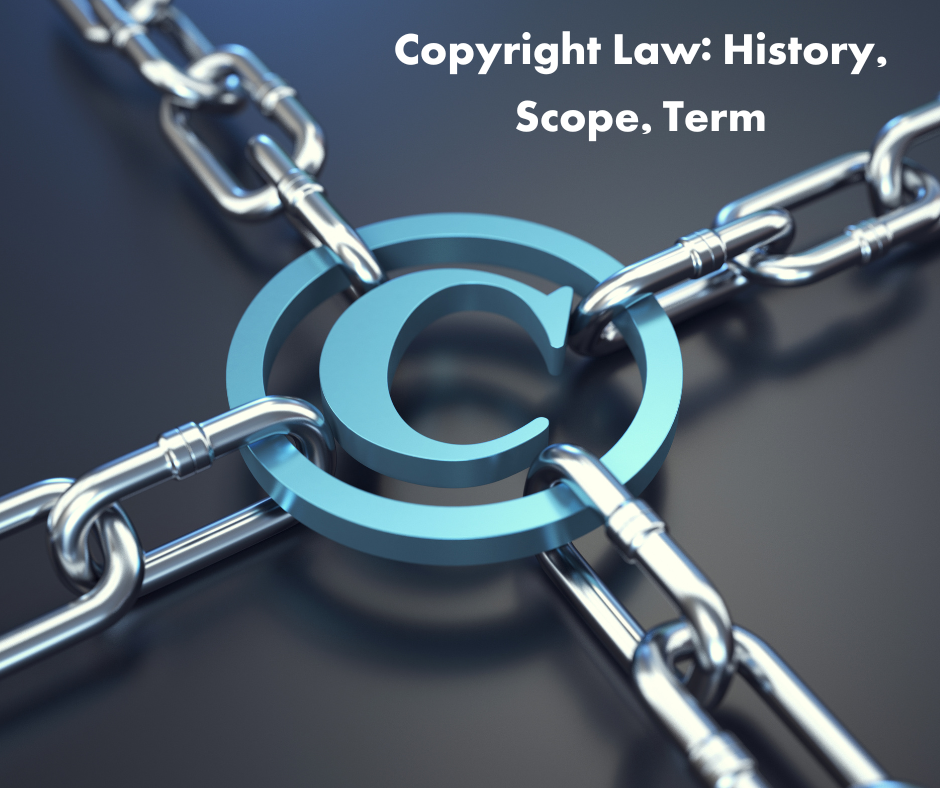There are two types of wealth in the world. First, material wealth, such as land, property, house, car, money, etc. Second, intellectual wealth. Whatever a person creates or invents through the application of his intellect is his intellectual wealth. The main weapon for protecting human intellectual wealth is copyright. Copyright is closely related to intellectual property. According to the World Intellectual Property Organization (WIPO), which protects intellectual property: Intellectual property refers to creations of the mind, inventions, literary and artistic works, and symbols, names, and images used in commerce.
In the modern world, intellectual property is mainly divided into two categories. First, industrial property. Such as patents, trademarks, industrial designs, geographical indications, etc. Second, creative property or copyright. This mainly refers to activities related to artistic and cultural creations. Such as literature, art, music, films, plays, computer software, etc.
Copyright Meaning: The word that is closely related to the protection and management of intellectual property is copyright. Its inherent meaning is hidden in the English word copyright. If we analyze the meaning of the word by dividing it into Copy and Right, then it means the right to copy. That is, all kinds of creative works such as literature, works of art, music, films, software, etc. can be copied or restored, translated, transformed and adapted without the permission of the creator or author. The concept of copyright is extremely contrary to international law, international agreements, domestic laws, morality and positive sense.
Definition of Copyright:
Copyright is the legal right to claim ownership of a work by the author. The most widely accepted definition is that given by the World Intellectual Property Organization (WIPO). According to the organization,” Copyright (or author’s right) is a legal term used to describe the rights that creators have over their literary and artistic works. Works covered by copyright range from books, music, paintings, sculptures, and films to computer programs, databases, advertisements, maps, and technical drawings.”
In simple words, copyright is the exclusive moral and financial right of the creator of a creative work.
Copyright is a type of right that gives the creator of a creative work the exclusive power to reproduce, print and adapt that work and that right allows him to transfer all kinds of rights to his creative work to others. Literature, art, drama, music, records, films, software, websites, etc. can be copyrighted. In addition, any actual work or its manuscript can also be copyrighted. Copyright always determines the author or creator of the creative work and the right of ownership. Due to this right, the creator of a work can prevent any kind of theft, modification, printing, publication, conversion or copying of his creative work. And copyright law is enacted to protect the intellectual property of creative work. As members of the World Intellectual Property Organization (WIPO), 189 countries in the world currently officially adhere to copyright law.

History of Copyright:
In ancient Greek and Roman literature, poets and writers had no financial benefits other than fame or respect. At that time, they only received some patronage from the wealthy in society. The same situation prevailed in other European countries. Although literary publishing was a limited business in those days, the publishers received a large share of the income, and the poets and writers did not receive any dividends.
This situation began to change after the invention of the printing press. The first to obtain the right to own or preserve copyright was the minters. The government of England allowed a limited number of authors and mints to publish books and other texts. This was mainly done to increase the state’s taxes. This did not preserve any rights of the author or publisher.This situation improved somewhat in the early 16th century. An association called the Stationers’ Company of England emerged. The association was recognized so that no anti-state or objectionable writings were published. In this, the association gained exclusive power in the field of publication. Every publisher had to be a member of the association. No published book could be published without being a member. Each book had to be registered. Government control existed over publishing houses for a long time. Later, awareness gradually increased in protecting the interests of publishers and authors. The first Licensing Act was enacted in 1662.
The first copyright law in England was enacted in 1709. This law stated that the term of copyright on books published before 1709 was 21 years. Later, the term was extended to 14 years for books published after 1709. However, from 1814, the copyright term was increased from 14 to 28 years.
After the first copyright law was introduced in 1709, copyright laws were enacted in different countries at different times. The Fair Copyright Act of the United States was enacted in 1790. At that time, copyright rights were limited only to the geographical boundaries of the country. Later, some countries signed the International Copyright Convention in Bam, Switzerland in 1886. Then, some important documents of the Berne Convention were amended in the international treaty held in Rome, Italy in 1928.
Scope of Copyright:
The materials covered by copyright and the interests of the creators are protected:
1. Books and text materials – poems, plays, novels, essays, encyclopedias, calendars, gazetteers, collections and all kinds of magazines.
2. Music – various categories and elements.
3. Photographs – photographs, photogravures, etc.
4. Film – Fine arts, art, design, pictures, maps, photographs, drawings, plans, models, etc.
5. Record – Record of songs, dances, speeches, orations, etc.
6. Computer – Literature, drama, music, other works of art created through computers.
Copyright Term:
The term of copyright varies from country to country. In the United States, the term of copyright for literary, dramatic and musical works is 28 years. If not renewed, it is another 28 years. An application for renewal must be made within the stipulated 28 years. If an application is not made within this period, the copyright for the relevant publication expires after 28 years.
The term of copyright for literary, dramatic, and musical works in England is the life of the author and 50 years after his death. And if the author and the author are both alive and unpublished, then the term is 50 years from the date of first publication. But if the work remains unpublished, the copyright will remain in perpetuity. A new law has been introduced in the field of copyright since January 1, 1978. If there is only one author of a book or song, the copyright will remain in force for 500 years after the death of the author. On the other hand, in the case of joint authorship, the law will remain in force for 50 years from the death of the person who died after him. If the name of the author is unknown, i.e., anonymous or a pseudonymous author, the law will remain in force for 50 years from the date of publication. In the case of a book written by a gifted author, copyright will be applicable for 100 years from the date of writing by the author.
For older publications that have completed 28 years of copyright as of January 1, 1978, copyright will remain in effect for another 47 years.
In conclusion, copyright law serves as a vital shield for protecting human creativity, ensuring that authors and inventors retain moral and financial control over their intellectual creations. It not only preserves the rights of creators but also promotes cultural and technological progress by encouraging innovation and the responsible sharing of knowledge.



